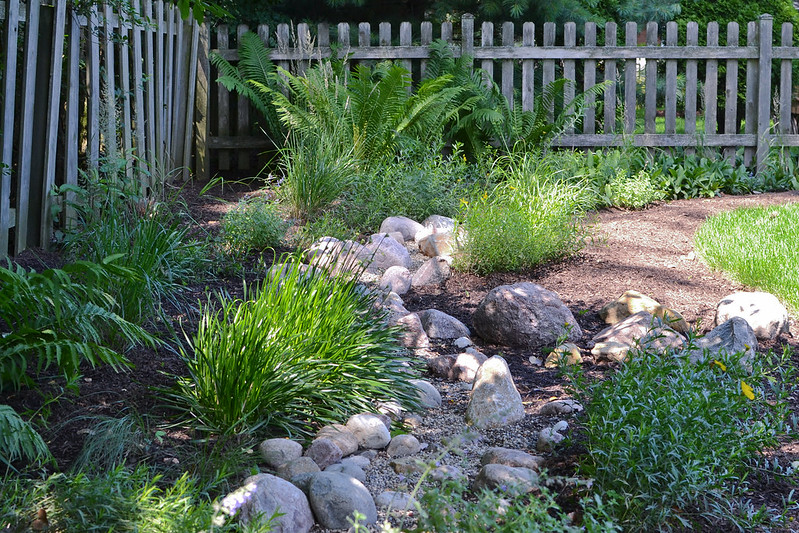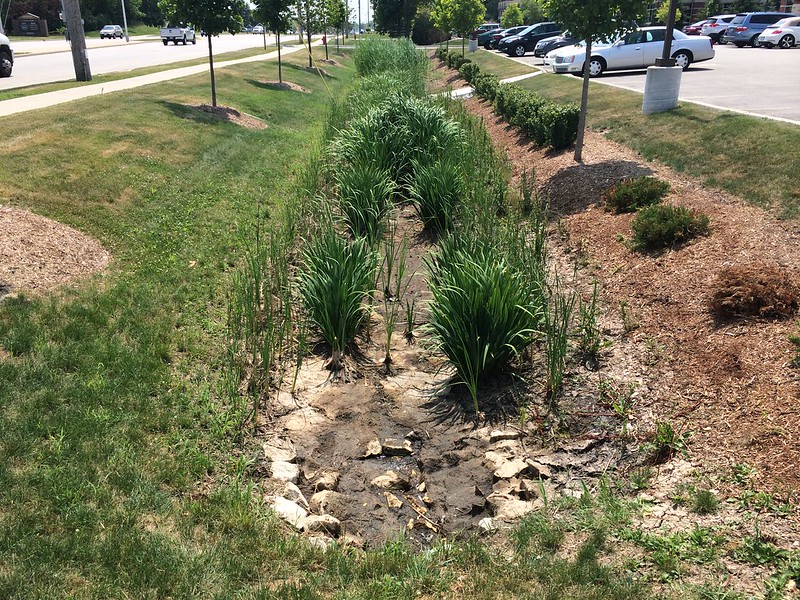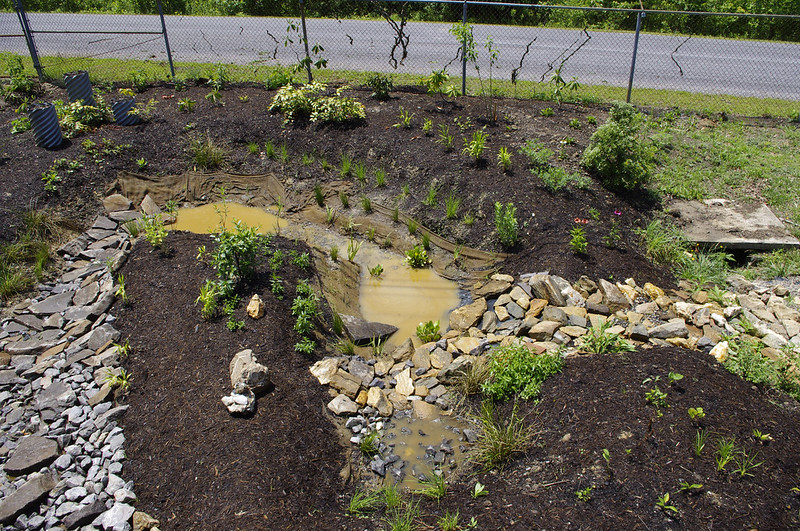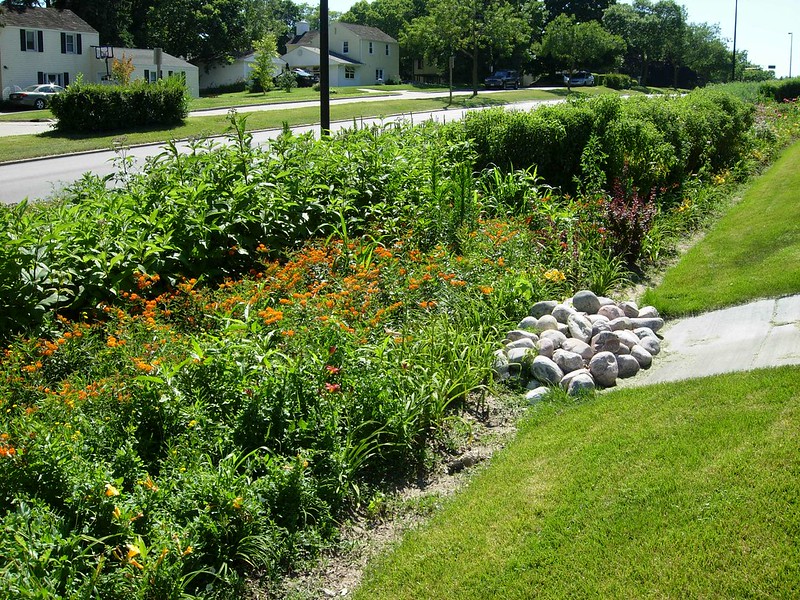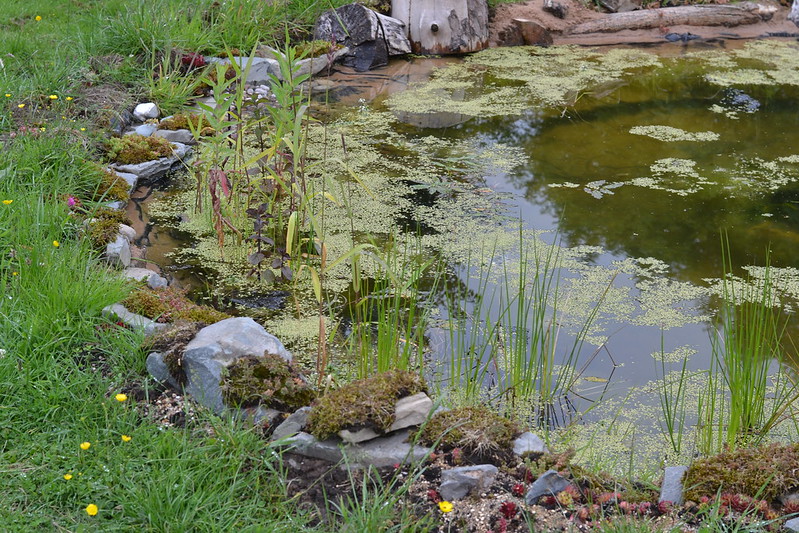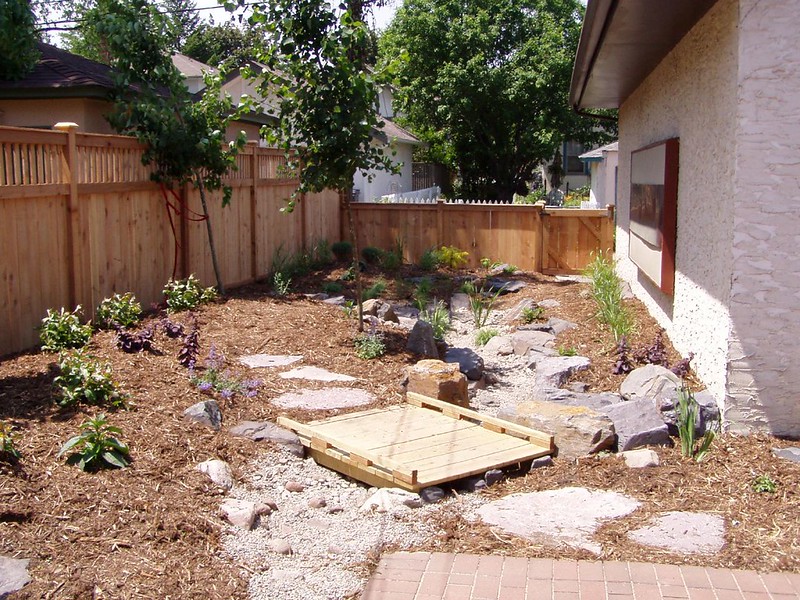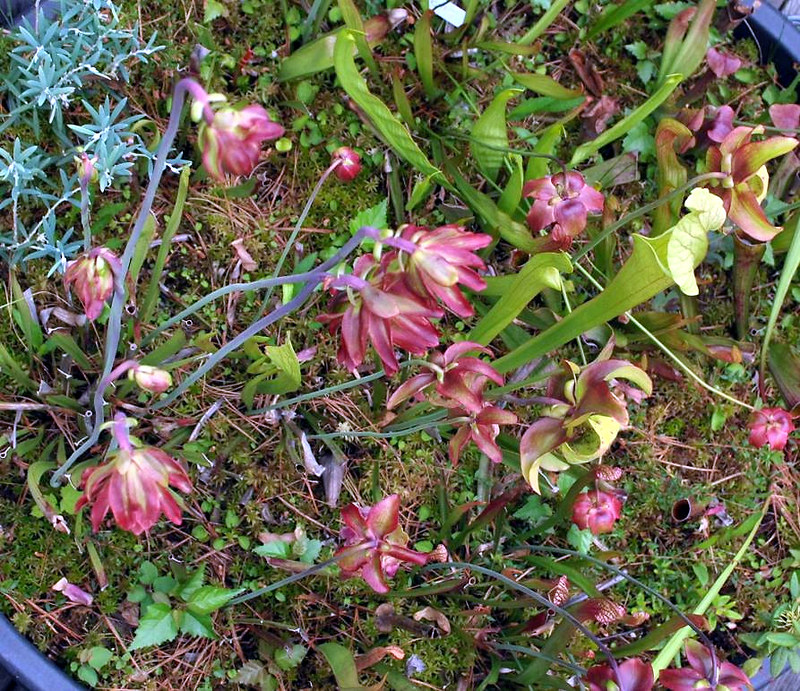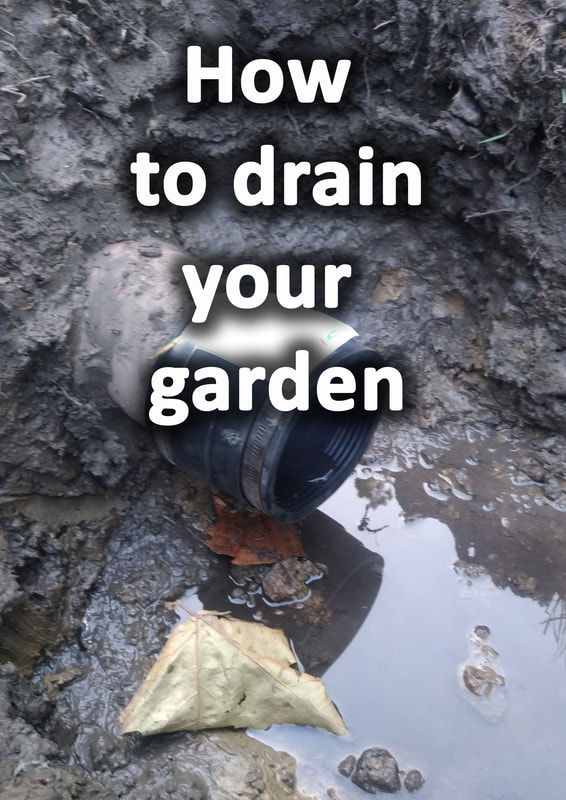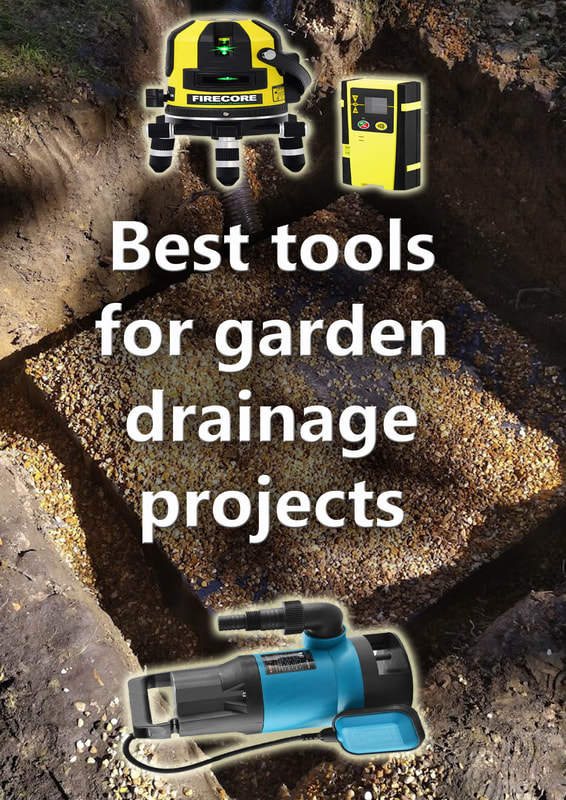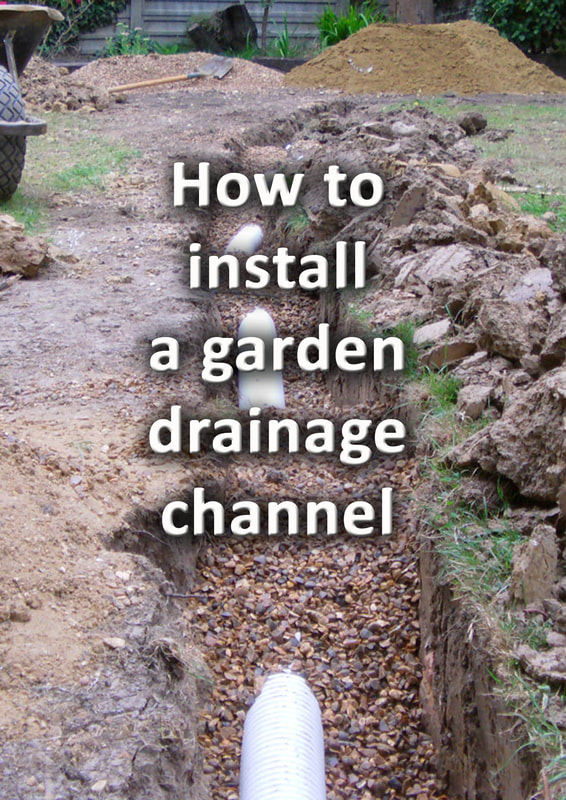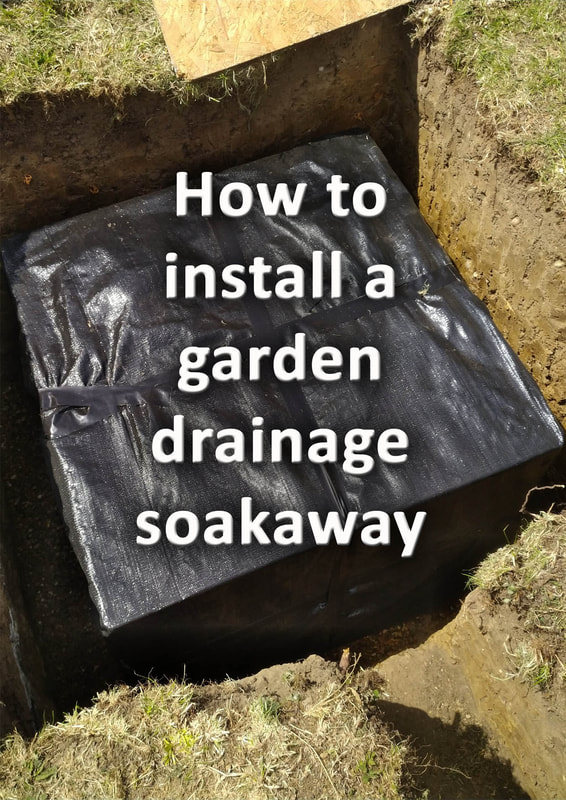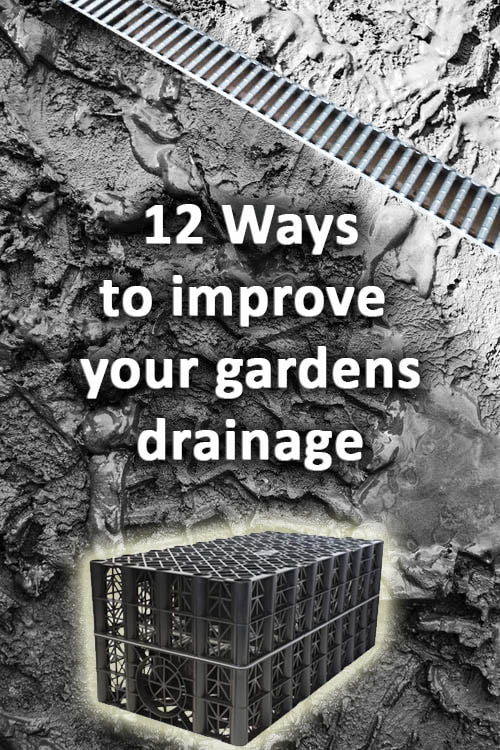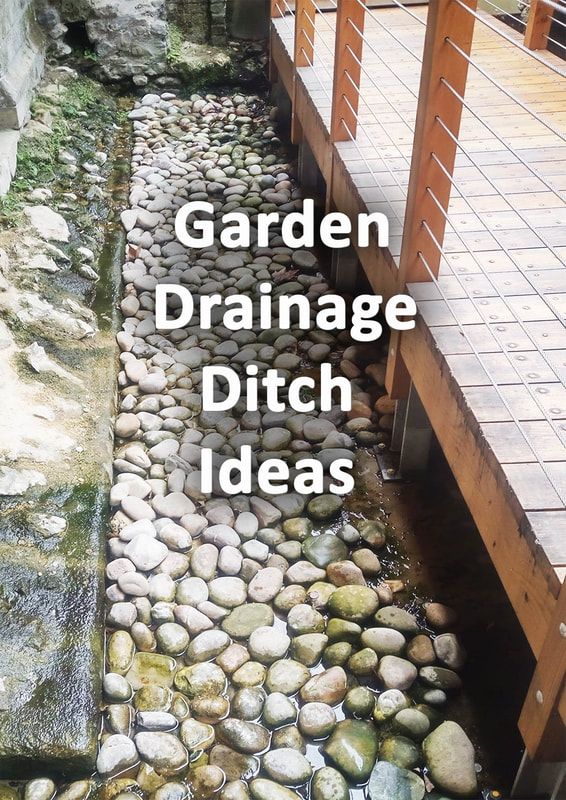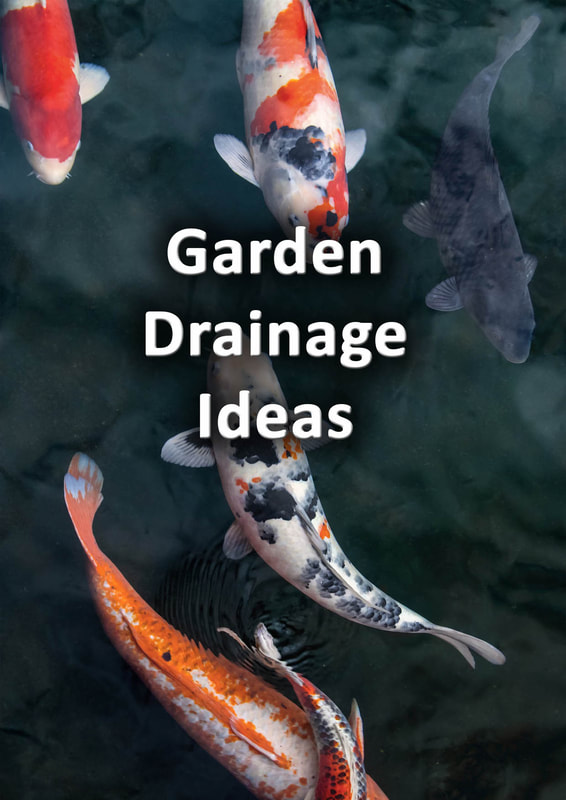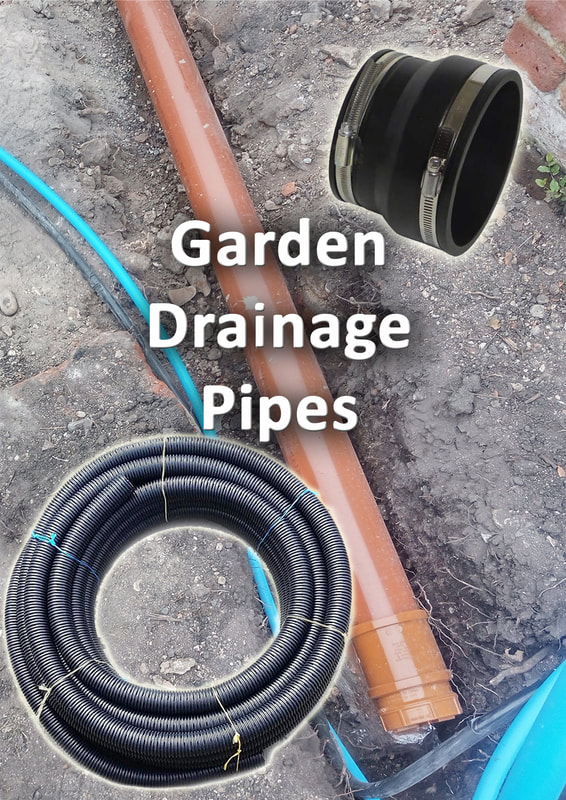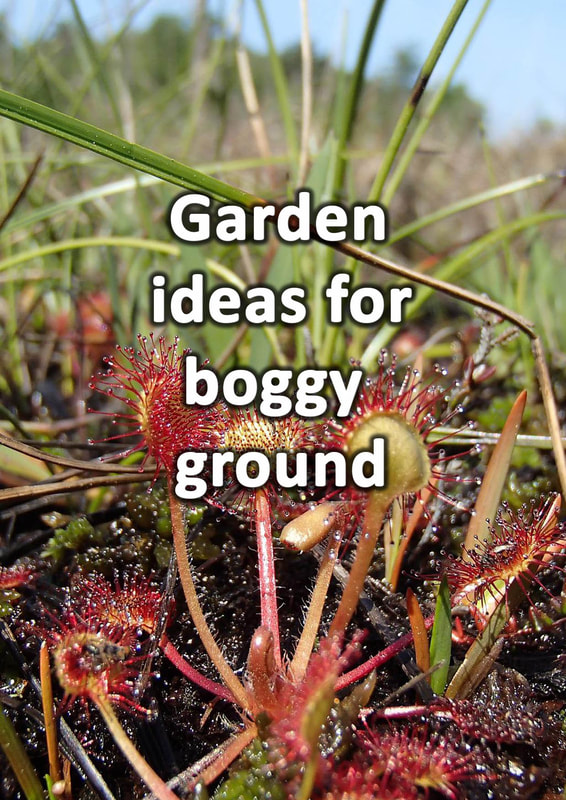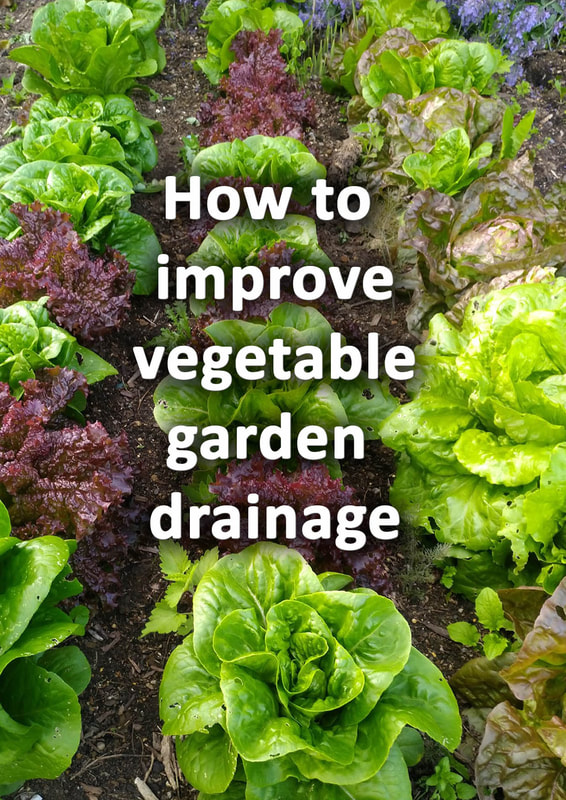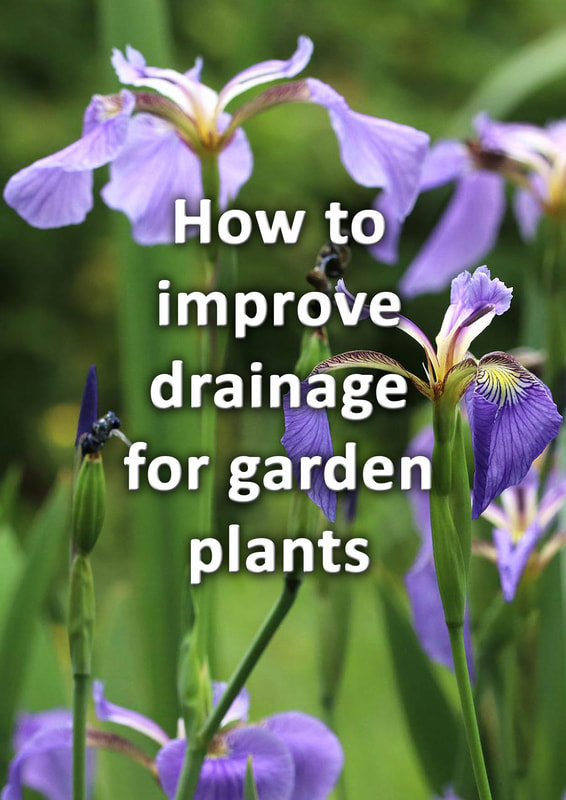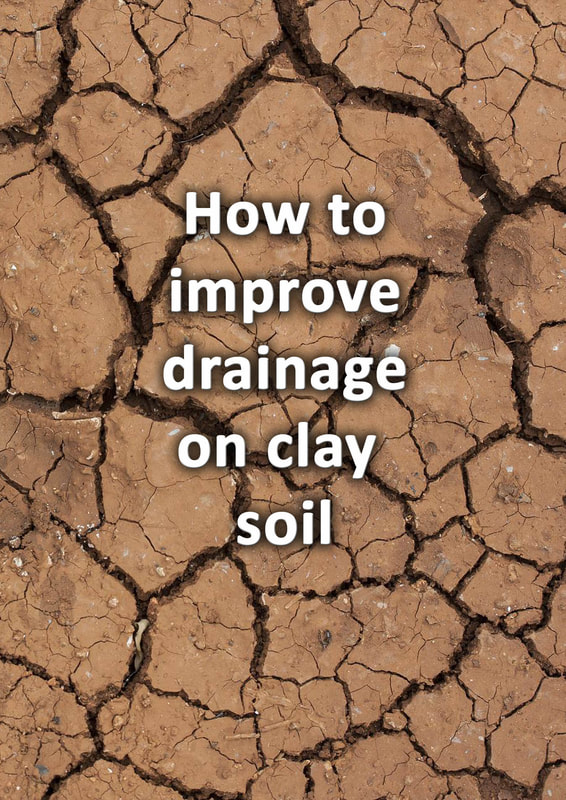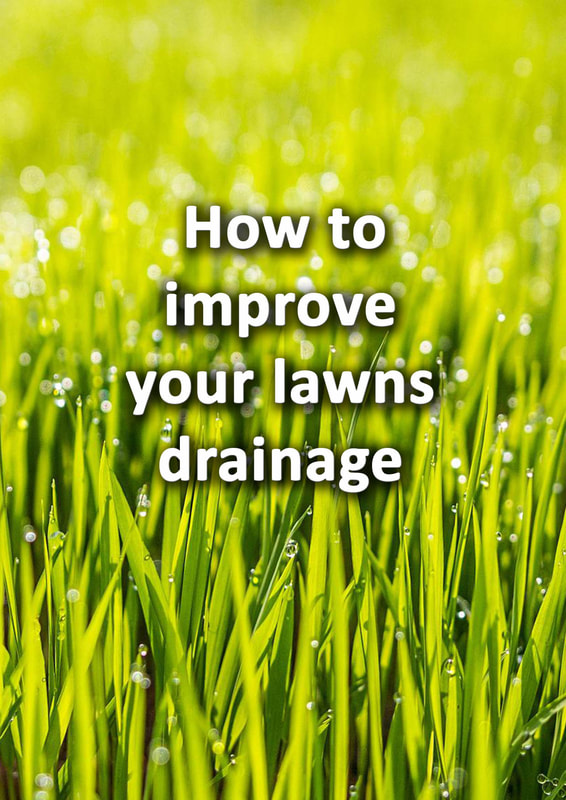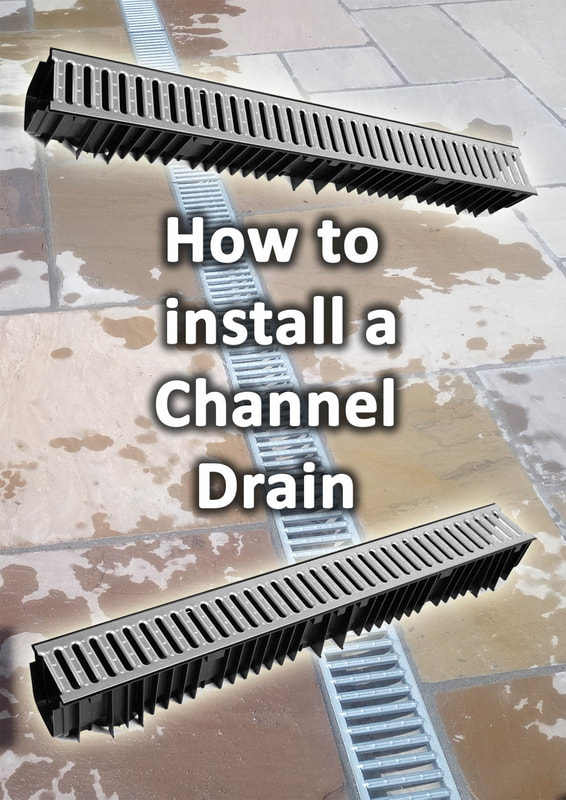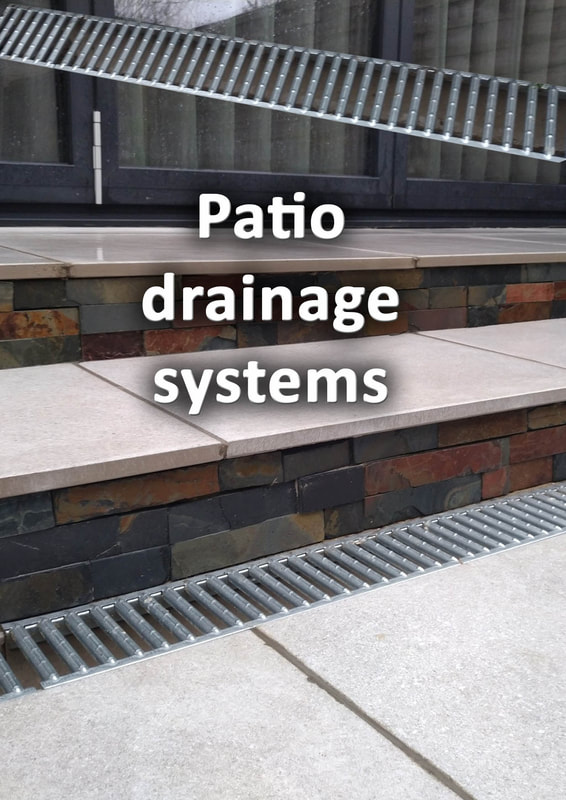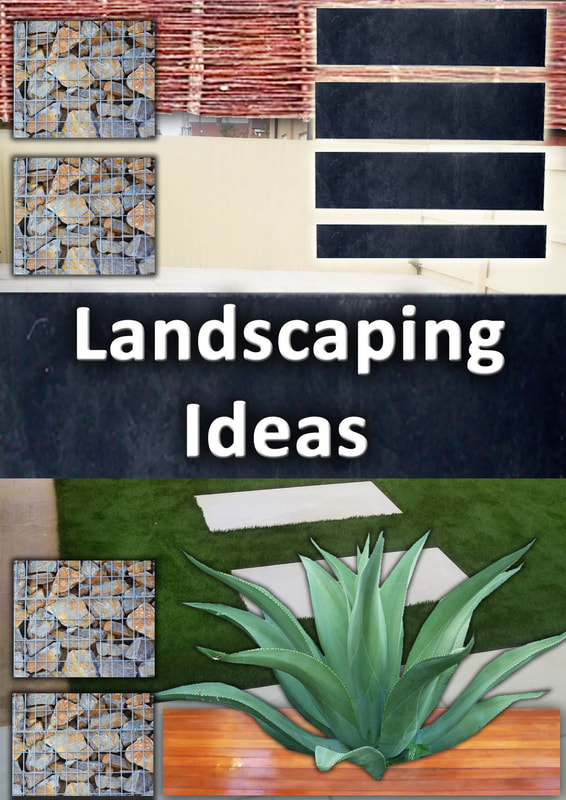|
This article contains affiliate links
Rain gardens can be a fun and exciting way to manage water around your property. Not only can they provide a method of sustainable water management they can also become attractive landscape features.
There is no better way to create something exciting and educational with the storm runoff from around your property! What is a rain garden?
A rain garden is a small section of landscape which is designed to absorb water from the home. It is typical for these to take the shape of a shallow depression or swale where water can run to. These can be planted with wetland or bog plants to create a wetland habitat. However, rain gardens can be much more elaborate affairs! Water runoff can be channelled into decorative channels and custom built water features. An element of aesthetic design and engineering can be implemented to represent the natural process of the natural landscape. Why build a rain garden?
Sustainable water management is an ever increasing environmental issue today. The expansion of urban development’s has led to accelerated storm runoff and flooding. Toxic chemicals and substances are washed from hard surfaces into the drainage network. This polluted water finds its way into natural watercourses and wetland basins. This can lead to aquatic ecosystems becoming poisoned with chemicals. Not only does this kill wildlife but add toxins to the hydraulic cycle which we need to survive. Consequently absorbing the storm water from your home is good for the wider environment. This water can be collected in retention ponds or water butts for irrigation during the summer.
Furthermore rain gardens encourage the creation of wetland habitats. These are good for encouraging wildlife and beneficial species which eat pests.
Rain gardens can also be very educational for children. If designed well they can demonstrate a sustainable relationship between the landscape and the home. They illustrate the process of the hydraulic cycle and how natural systems are vital for our own survival. On top of these reasons to create a rain garden they can also look absolutely fantastic! There are so many interesting and beautiful ways they can be implemented into a garden. Sustainable urban drainage
Sustainable urban drainage or (SUDS) are various methods and strategies to sustainably manage landscape water. The main aim of SUDS is to slow water runoff and allow it to be reabsorbed into the landscape. During this process water should fed slowly through a series of manmade wetlands. These habitats should slowly clean the water of toxins by running through the roots of wetland plants. There are many installations which come under the umbrella of Sustainable Urban Drainage. Some of these include green roofs, permeable paving, bioswales, seasonal flooding ponds, and bog gardens Designing your rain garden
When planning your rain garden think about where you would like to collect the water from. Think of ingenious ways to collect the water and create a feature out of it. You may want to incorporate a decorate, gravel, gulley along a seating area that fills up during heavy rain. You may want to channel all the water into a seasonal, flooding, pond. This could be in a gated off nature area where you could wildlife watch with the family. Sketch out a plan of some of your ideas and how they could be implemented. Working out your catchment
A good thing to do if you are planning on diverting large volumes of water is do some calculations. You want to make sure that your new rain garden will not be overwhelmed in heavy rain. A good thing to do is measure the surface area of your water catchment area. For example, if the water is coming from your roof find out how many square metres it is. Then you will have to times this amount by your areas average, annual, rainfall. This will then provide you with the amount of water a given area can expect per year in cubic metres. The calculation will give you some idea of the scale needed for your rain garden. Rain garden elements
There are so many methods and landscape features which can go into a rain gardens design. There are so many good precedent images, examples and ideas to be discovered online. Find image examples of rain gardens you like and think about how you could implement them into your project. Below we have described some of the typical features and elements of rain gardens. Gravel streams
Gravel streams are a decorative way to channel water from one location to another. These can simply be patio drainage chambers filled with a shallow depth of gravel. However they can also become prominent landscape features with decorate pebbles and aggregates. Guttering can be piped into hand worked concrete depressions with flat pebbles pushed into the surface. This can create a dry river bed effect and feed into other wetland gardens. Bio swales
Bio swales are landscape depressions which allow water to be reabsorbed into the landscape.
These are usually gentle, linear ditches which transport water along a particular route. Storm water is fed into one end where it travels across the landscape slowly being reabsorbed. Bio swales can become a feature in their own right and planted with wetland plants. Retention ponds
Retention ponds are basically ponds which retain surface water run off. These can be simply be glorified tanks which store water for when it’s needed. This is very useful for use during the summer months which provides a sustainable irrigation solution. Alternatively retention ponds can be wildlife ponds which are fed by run off from the home. These can be designed with subsequent overflow ponds for times of extreme rainfall. Cobble moats
Cobble moats can be an exciting way to landscape a rain garden. One way of doing this is by creating the illusion of a river flowing across your yard. Moats can be excavated and lined like any other garden, pond, feature. Clad the moat with large cobbles so you do not see the liner when the water is low. These can be bedded on top of mortar so they stay in position. In times of heavy rain water can be channelled into the moat causing seasonal variation. You could build a series of deck bridges over the moat which creates an exciting journey. Seasonal flooding wetlands
Seasonal flooding wetlands are landscape depressions which except water during times of heavy rain. These work in a very similar way to bio-swales but in a more concentrated area. Generally these are designed as a central pond with surrounding bog areas. There is a central deep, plunge, to the pond which stays full for most of the year. During times of heavy rain the wetland slowly fills absorbing the run off naturally. Seasonally flooding wetlands are an extremely rare habitat type and vital for specific species. This makes them a great ecological installation into your rain garden. Bog gardens
Bog gardens are wetland features which aim to recreate natural bogs or swamps. These are generally built like a pond but shallower and wider. Pond liners are set deep into the ground and then filled with soil. The bog is then filled up with water to create a saturated garden. These are then planted with bog plants and left to establish. Bog gardens can look really effective with old tree trunks and ferns around the perimeter. Rain gardens can feed directly into bog gardens which make great wildlife habitat.
Thank you for reading our article on how to make a rain garden. If you require a rain garden or wetland designed and built why not contact us. We are experts in sustainable urban drainage and ecological wetland creation.
Alternatively if you are creating your rain garden yourself you could visit our landscaping resource page.
'As an Amazon associate I earn from qualifying purchases'
1 Comment
nks for sharing the article, and more importantly, your personal experience mindfully using ourdcsc emotions as data about our inner state and knowing when it’s better to de-escalate by taking a time out are great tools. Appreciate you reading and sharing your story since I can certainly relate and I think others can to
Reply
Leave a Reply. |
The Author
|
Landscaping services across Buckinghamshire, Amersham, Aylesbury & High Wycombe
Hyde Heath, Amersham, Buckinghamshire |
|

